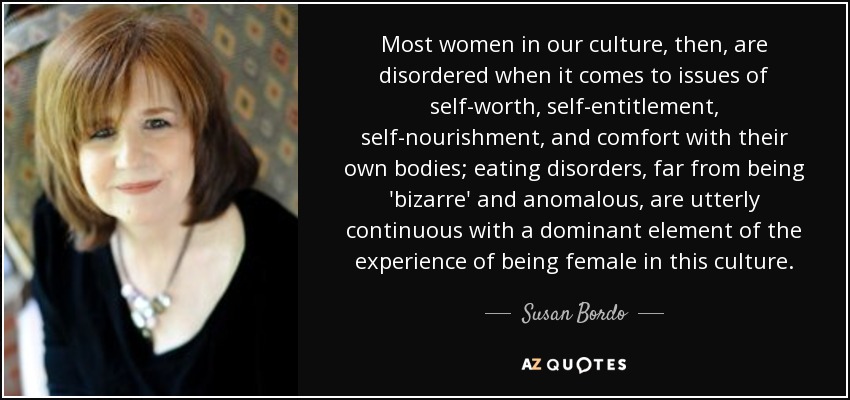"Chapter 5. The Body and the Reproduction of Femininity"
pp. 2096-3000
The body is considered a “medium of culture” (Bordo 2096) because it is defined by our daily rituals. Mary Douglas, an anthropologist, argues that the body is “a power symbolic form, surface on which the central rules, hierarchies, and even metaphysical commitments of culture are inscribed and thus reinforced through the concrete language of the body” (2099). The body is also a practical area of social control as well such as table manners, toilet habits, and other routines. Due to the normalizing of “transformation” and focus on “improvement” many women tend to become less socially oriented and more focused on “self-modification” with disciplines of diet, makeup, and clothing. The stress on appearance affects women far greater than men in our society despite the attempt to transform power relations. The media promotes traditional gender relations that “involve women hiding in the shadow of men, seeking solace in their arms, willingly contracting the space they occupy” (2098). In order to advance, society needs to abandon the idea of power being obtained by a group and leveled against one another. Next, an “analytics adequate” to describe a power where the mechanisms are constitutive and NOT repressive. Lastly, a discourse that will “enable us to account for the subversion of potential rebellion” (2098). Our appearance as a woman is what society defines our femininity as.

